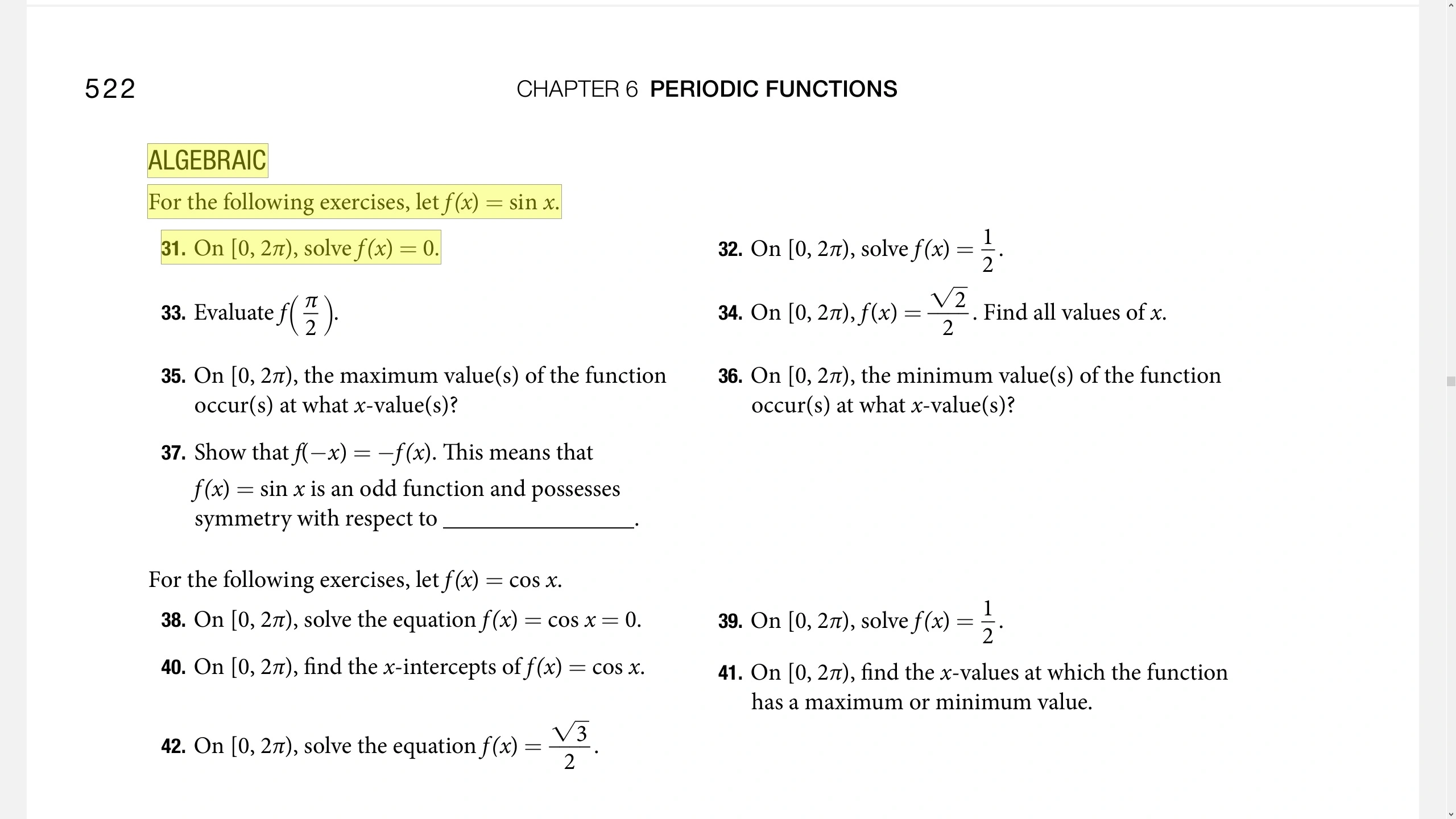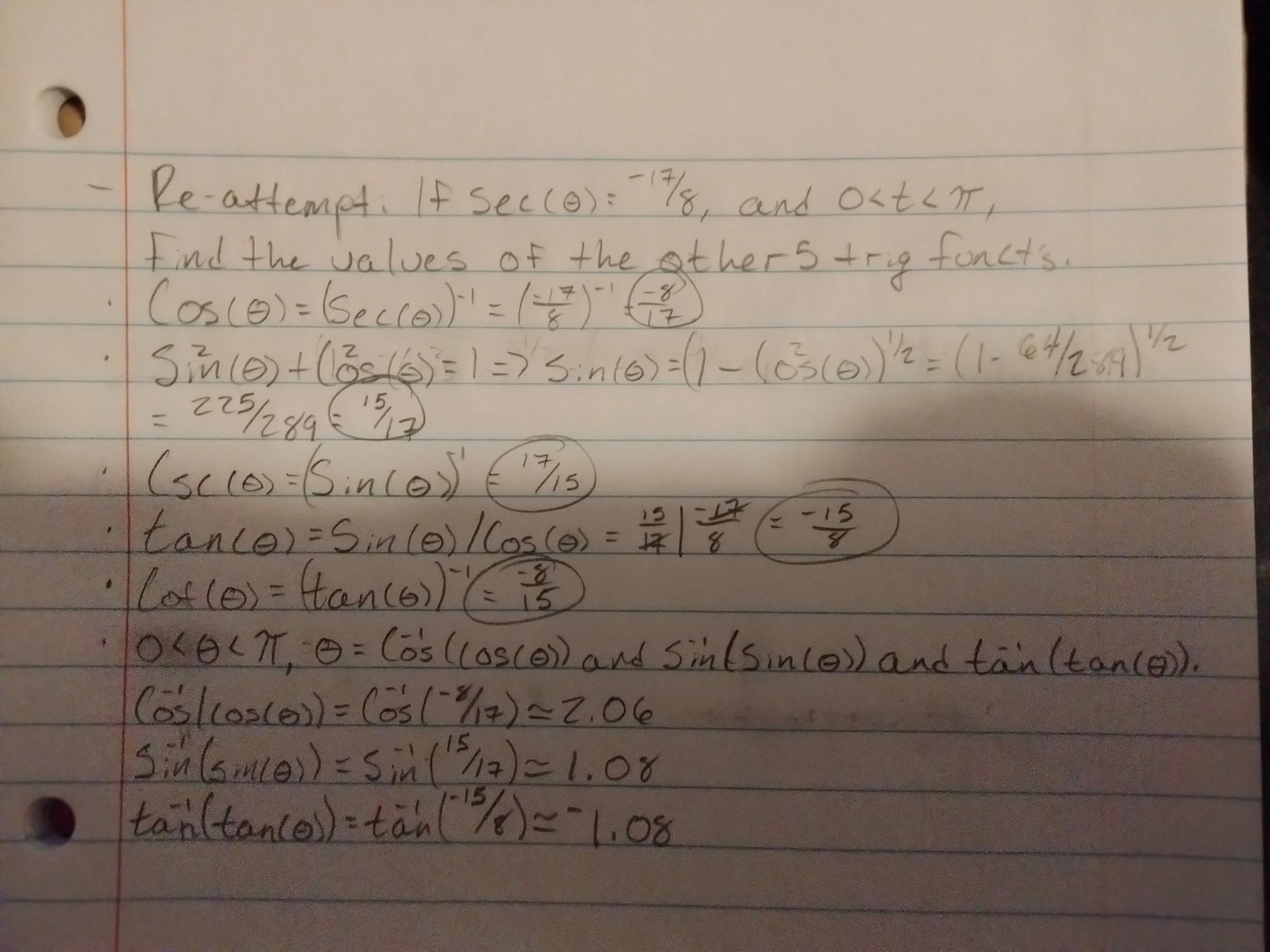Search
Algebraic Solutions to Graphical Trig Problems?


I've been knocking out the trig problems in this section with minimal difficulty so far, but I've run straight into a brick wall on this "Algebraic" part. I'm asked to find sin(x)=0 between [0,2π). If I graphed the unit circle this would be a trivial exercise to show sin(θ)=0 when θ=0 or π.
Where I have trouble is- I'm very explicitly being told here that the solution is ALGEBRAIC, and I'm struggling to figure out a way to rearrange sin(x)=0 to come up with the known answer. Further, unit circles are not in this chapter, they wouldn't likely ask me to exercise a skill taught in another chapter. What am I missing?
It's not just 31, either. Looking ahead at eg 37, I can easily show sin(-x) = -sin(x) on a unit circle. I could maybe fuck around with inverse trig ratios but those are in section 3- this is only section 1.
Help me out here, drop a hint, share a link: how do I solve sin(x)=0 on [0,2π), but algebraically? I suspect it's something glaringly obvious and/or very very simple I've overlooked.
Inverse Trig Functions Not Giving Consistent Outputs With Each Other?


It's homework help, but I'm not asking for the solution. The problem only asks for cos, sin, tan, cot, csc given sec. I found those pretty quickly on my own, and confirmed solutions with the back of the book.
Where I run into confusion is when I try to find angle theta on my own. Arccos of found cos gives 2.06, arcsin of found sin gives 1.08, and arctan of found tan gives -1.08. Problem givens exclude possibility of the negative angle found by arctan(-15/8), but the other two are possible and conflicting. And why wouldn't they all be the same? I reattempted because there were so many erase marks from trying to figure this out that it was almost illegible.
Am I wrong? Did the book give me a point not on the unit circle or something, assuming I wouldn't try to find theta on my own? Have I used arcfuncs wrong- I checked the domains against the function definitions? Have I found a hole in math?